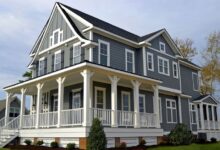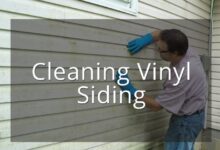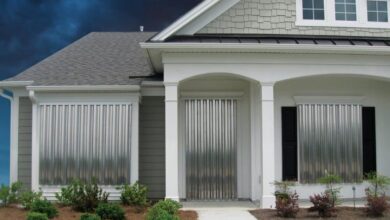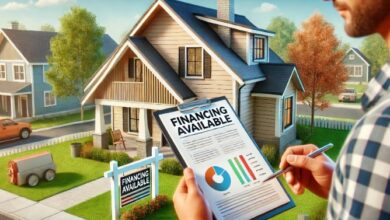ffordable Siding Options: Best Budget-Friendly Choices for Your Home | Expert Guide
When you’re looking to upgrade or maintain your home’s exterior, affordable siding options offer a perfect balance between cost-effectiveness and aesthetic appeal. Whether you’re a homeowner looking to refresh your property or a contractor working on a project, finding the right siding is crucial. In this article, we’ll explore some of the best budget-friendly siding options, their benefits, and how you can easily purchase them.
Siding doesn’t have to break the bank, and there are many materials and styles that can suit both your style and budget. 🌍 Let’s dive into the world of affordable siding and discover which ones are right for you!
Best Affordable Siding Options: An Overview

Affordable siding is available in a variety of materials, including vinyl, wood, fiber cement, and metal. The key is finding a balance between price, durability, maintenance, and style. In this section, we’ll explore five of the top options:
1. Vinyl Siding
Vinyl siding has long been a favorite for homeowners looking for an affordable, low-maintenance option. It is known for its durability and wide range of colors and styles.
Why Choose Vinyl Siding?
- Cost-effective: One of the most budget-friendly materials available.
- Low Maintenance: Requires very little upkeep—no painting needed!
- Energy Efficient: Insulated versions can help reduce energy costs.
Example Product:
- Use Case: Perfect for homeowners who want a cost-effective, long-lasting siding that looks great year-round.
- Pros: Affordable, weather-resistant, easy to clean.
- Cons: Can fade over time and may crack in extreme weather conditions.
- Price: Around $3 – $7 per square foot.
- Features: Available in various colors, comes in long panels to minimize seams, and has good UV resistance.
| Feature | CertainTeed Vinyl Siding |
|---|---|
| Use Case | Budget-conscious homeowners |
| Pros | Affordable, low-maintenance |
| Cons | Fading and cracking in extreme weather |
| Price | $3 – $7 per sq. ft. |
| Key Features | UV resistant, long panels |
2. Fiber Cement Siding
Fiber cement siding is a strong, durable option that mimics the appearance of wood or masonry but is much more affordable.
Why Choose Fiber Cement Siding?
- Durable and Long-Lasting: Resists termites, rot, and weather damage.
- Fire-Resistant: A great choice if you live in fire-prone areas.
- Customizable: Available in different styles like lap, shingles, and vertical panels.
Example Product:
James Hardie Fiber Cement Siding
- Use Case: Ideal for those who need a durable, fire-resistant material that still looks elegant.
- Pros: Highly durable, comes in various textures and styles.
- Cons: Higher installation cost and weight makes it harder to install.
- Price: Typically $6 – $10 per square foot.
- Features: Water-resistant, easy to paint, comes in different textures.
| Feature | James Hardie Fiber Cement Siding |
|---|---|
| Use Case | Fire-prone and high-durability areas |
| Pros | Durable, water-resistant |
| Cons | Higher initial cost, heavy |
| Price | $6 – $10 per sq. ft. |
| Key Features | Fire-resistant, customizable |
3. Aluminum Siding
Aluminum siding offers a lightweight, durable option for homeowners who want an affordable, metal alternative to traditional wood.
Why Choose Aluminum Siding?
- Affordable: More affordable than steel, yet offers similar durability.
- Lightweight: Easier to handle and install than many other materials.
- Rust-Resistant: Resistant to corrosion, making it ideal for coastal climates.
Example Product:
- Use Case: Best for homes in humid or coastal areas where rust and corrosion are a concern.
- Pros: Lightweight, rust-resistant, and eco-friendly.
- Cons: Can dent easily and is less energy-efficient.
- Price: Around $3 – $5 per square foot.
- Features: Variety of colors and finishes, rust-resistant, easy to install.
| Feature | Alcoa Aluminum Siding |
|---|---|
| Use Case | Humid or coastal areas |
| Pros | Lightweight, rust-resistant |
| Cons | Prone to dents, less insulation |
| Price | $3 – $5 per sq. ft. |
| Key Features | Rust-resistant, variety of finishes |
4. Wood Siding
Wood siding provides a natural, aesthetic look that can add curb appeal to any home. While traditionally more expensive, affordable wood options are available.
Why Choose Wood Siding?
- Natural Appearance: Offers a classic, beautiful look.
- Good Insulation: Helps with energy efficiency.
- Customizable: Can be painted or stained to match your home’s exterior.
Example Product:
- Use Case: Ideal for homeowners seeking a natural look with modern durability.
- Pros: Durable, customizable, and available in prefinished options.
- Cons: Requires regular maintenance (painting or staining).
- Price: Approximately $5 – $8 per square foot.
- Features: Engineered wood, prefinished options, resistant to termites and decay.
| Feature | LP SmartSide Wood Siding |
|---|---|
| Use Case | Homeowners wanting natural beauty |
| Pros | Customizable, durable |
| Cons | Requires maintenance |
| Price | $5 – $8 per sq. ft. |
| Key Features | Engineered wood, prefinished options |
5. Stucco Siding
Stucco offers a beautiful, textured finish that can enhance the curb appeal of any home. It’s a long-lasting option that has been used for centuries.
Why Choose Stucco Siding?
- Versatile: Can be applied in various colors and finishes.
- Durable: Lasts a long time if maintained properly.
- Energy Efficient: Provides good insulation, reducing energy costs.
Example Product:
- Use Case: Perfect for homeowners who want a unique, durable finish with a traditional Mediterranean or Spanish look.
- Pros: Low maintenance, highly durable.
- Cons: Can be expensive and requires professional installation.
- Price: $7 – $12 per square foot.
- Features: Variety of textures and colors, long-lasting finish.
| Feature | Sikaflex Stucco Siding |
|---|---|
| Use Case | Unique, high-end look for homes |
| Pros | Low maintenance, durable |
| Cons | Expensive, professional install |
| Price | $7 – $12 per sq. ft. |
| Key Features | Variety of textures, long-lasting |
How to Buy Affordable Siding Options
Buying affordable siding doesn’t have to be a complicated process. With a little research and some basic guidance, you can find siding options that fit both your budget and style. Here’s a step-by-step guide on how to buy affordable siding options for your home.
Step 1: Research Different Siding Materials
The first step is to explore the various types of siding materials that fit within your budget. Affordable siding options are available in a variety of materials, each with its own pros and cons. Some of the most popular budget-friendly options include:
- Vinyl Siding: One of the most affordable materials, with low maintenance and a wide range of colors.
- Fiber Cement Siding: Offers more durability and longevity, though it’s typically a little more expensive than vinyl.
- Aluminum Siding: A lightweight, rust-resistant option that’s cheaper than many metal alternatives.
- Wood Siding: A classic, natural look that can be more affordable if you go with engineered wood or pre-finished options.
- Stucco Siding: While more expensive, it can be a good long-term investment for its aesthetic appeal and energy efficiency.
Take the time to compare these materials in terms of cost, durability, and maintenance requirements. This will help you find the material that meets your needs without exceeding your budget. 🌍
Step 2: Set Your Budget
Before you start shopping, it’s important to set a clear budget for your siding project. Keep in mind that siding costs are typically calculated per square foot, and prices can vary depending on the material, installation costs, and additional features (like insulation).
Here’s a rough breakdown of the cost per square foot:
- Vinyl Siding: $3 – $7 per sq. ft.
- Fiber Cement Siding: $6 – $10 per sq. ft.
- Aluminum Siding: $3 – $5 per sq. ft.
- Wood Siding: $5 – $8 per sq. ft.
- Stucco Siding: $7 – $12 per sq. ft.
Don’t forget to account for labor costs if you plan to hire professionals for installation, as well as potential hidden costs like repairs, sealants, and tools. 🛠
Step 3: Check Online Retailers and Local Suppliers
There are several places where you can buy affordable siding:
Online Retailers
Many major home improvement stores offer competitive prices on siding. These retailers often have a wider selection and the convenience of online shopping.
- Home Depot: Offers a wide range of siding options at affordable prices, and you can often find sales and discounts online.
- Lowe’s: Similar to Home Depot, Lowe’s provides a variety of siding materials with competitive prices and regular promotions.
- Menards: Offers some of the most affordable siding prices, especially for vinyl and aluminum siding.
- BuildDirect: Known for offering bulk discounts and free shipping on certain siding materials.
These online stores often provide free shipping, discounted prices, and customer reviews, so you can compare different options from the comfort of your home. 🏠
Local Suppliers
For a more hands-on approach, check out local home improvement stores or specialty siding suppliers in your area. These businesses often offer personalized service, and you can see the materials in person before making your decision. You may also be able to negotiate prices or find sales.
- Local Hardware Stores: Local suppliers often provide discounts if you buy in bulk.
- Specialty Siding Dealers: These stores specialize in siding and may offer better guidance and installation services.
Step 4: Compare Prices and Look for Discounts
Before you make a purchase, compare prices across different suppliers. Don’t settle for the first deal you find. Look for discounts, coupons, or seasonal sales to make your purchase more affordable. Here are some ways to score discounts:
- Check for Sales: Major home improvement stores often have seasonal sales, especially during spring or fall when construction projects are more common.
- Use Promo Codes: Websites like RetailMeNot or Honey can help you find promo codes for additional savings.
- Bulk Discounts: Some stores offer discounts if you buy siding in bulk. If you’re doing a large project, consider buying everything at once to save more money.
Step 5: Consider DIY Installation or Professional Help
One of the biggest costs in a siding project is installation. While some types of siding (like vinyl) are easier to install yourself, others (like fiber cement or stucco) require a professional. Consider your own skill level and whether hiring a professional is worth the extra cost. Here’s a breakdown:
DIY Installation
If you’re a handy homeowner and want to save money on labor costs, installing vinyl, aluminum, or engineered wood siding yourself can be a great way to reduce costs. Here are some tips for a successful DIY project:
- Make Sure You Have the Right Tools: Basic tools like a hammer, drill, measuring tape, and level are necessary.
- Watch Tutorials: Plenty of online guides and YouTube videos can teach you step-by-step instructions on installing siding.
- Get Help: Siding can be heavy and difficult to handle alone, so consider getting a friend or family member to help.
Professional Installation
Some siding options, like fiber cement, stucco, and wood, may require a professional for the best results. Professional installers can ensure that your siding is installed correctly, preventing issues like leaks, warping, or damage down the road. Make sure to:
- Get Multiple Quotes: Ask for quotes from at least three contractors to find the best price for installation.
- Check Reviews: Look up customer reviews on sites like Angi or Yelp to find trustworthy contractors.
- Ensure Proper Licensing: Verify that the contractor is licensed and insured before hiring them to avoid any liabilities.
Step 6: Purchase and Order Your Siding
Once you’ve selected the siding that fits your budget, it’s time to make the purchase. Here’s how to proceed:
- Order Online: If you’re buying from an online retailer, double-check the shipping cost and estimated delivery time. Some online stores offer free shipping or curbside pickup options.
- Order from a Local Supplier: If you’re purchasing from a local supplier, check if they offer delivery services or if you need to arrange for pickup.
- Confirm Quantity: Double-check the amount of siding you need for your project to avoid under-ordering or over-ordering. Most suppliers will have a calculator to help you estimate how much you’ll need.
Step 7: Installation & Final Inspection
Once your siding arrives, it’s time for installation. If you’re doing it yourself, carefully follow the instructions or hire a contractor to handle the process. After installation, do a final inspection to ensure everything is properly sealed, aligned, and finished.
Where to Buy Affordable Siding: Quick Links

If you’re ready to buy affordable siding options, here are a few reliable online retailers where you can start shopping:
FAQs
1. What is the most affordable siding option?
Vinyl siding is generally considered the most affordable option due to its low material cost and minimal maintenance requirements.
2. Is fiber cement siding more expensive than vinyl?
Yes, fiber cement siding tends to be more expensive than vinyl, but it offers increased durability and a longer lifespan, which can be a better investment in the long run.
3. How often do I need to replace my siding?
The lifespan of your siding depends on the material. Vinyl can last 20-40 years, fiber cement 30-50 years, and wood requires more frequent maintenance.
4. Can I install siding myself?
It’s possible to install vinyl or aluminum siding yourself if you have the right tools and experience. However, more complex materials like fiber cement or stucco are better left to professionals.
5. What should I consider when choosing siding for my home?
Consider your budget, the climate in your area, your home’s aesthetic, and the amount of maintenance you’re willing to do.








